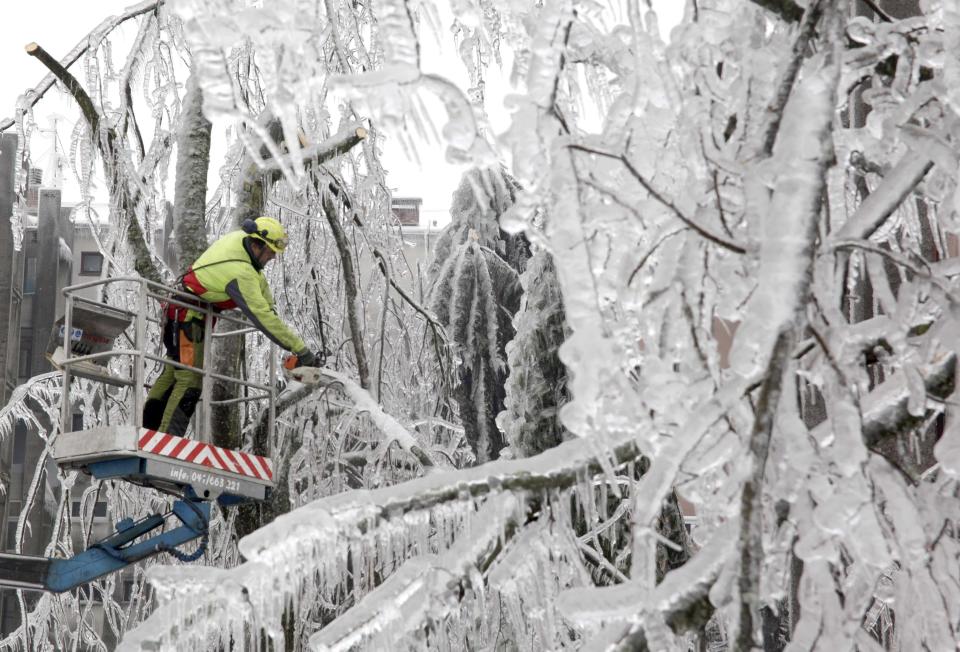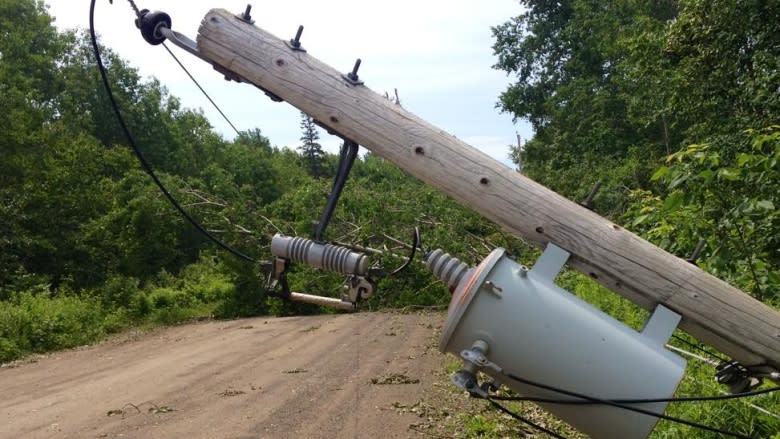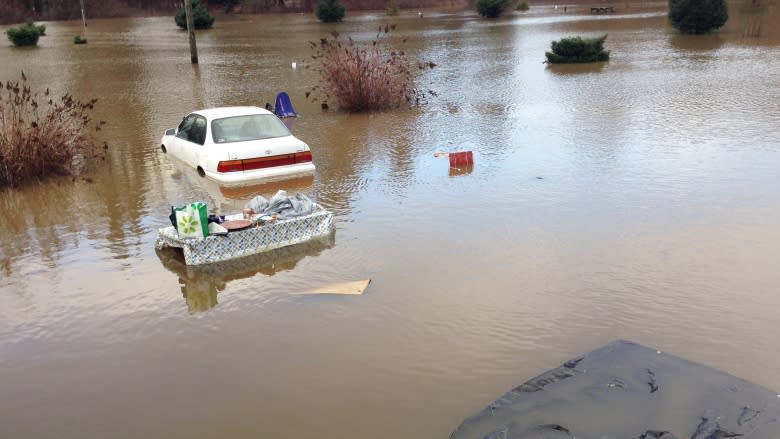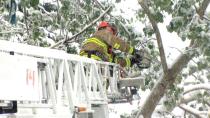Top 2014 weather story goes to Canada's long, cold winter
Environment Canada has released its list of top weather stories over the past year, and the long winter chill took top spot.
"Stick a thermometer into Canada and it read a measly 0.1 C above normal — the coldest year since 1996 and certainly out of step with the planet, which was on target to being the hottest year since modern records began in 1880," Environment Canada says.
The Great Lakes attained 92 per cent ice coverage for the first time in 35 years, sea ice was back on the East Coast and ice in the Gulf of St. Lawrence was its thickest in 25 years.
But as many Canadians know, the weather had many others ups and downs.
Here is Environment Canada's list ranked from 1 to 10 based on factors that include their impact on Canadians, the extent of the area affected, economic effects and longevity as a top news story.
1. Baby it was cold outside
"Canada’s reputation as the second coldest country next to Russia was reaffirmed in winter 2013-14," said the national weather agency on its website.
Snowfall records were set in Windsor, Ont., Kenora, Ont., Calgary, Red Deer and a handful of other cities. It was also the winter of the dreaded "polar vortex," or a circulation of frigid, dense Arctic air that moved much farther south than normal.
2. Rain, rain go away: Flooding in eastern Prairies
Flooding has been the big story across the Prairies for the last several years.
"This time, water problems prevailed across the eastern Prairies just a week before summer began," said Environment Canada. "Excessive rains on soggy ground — too much rain too fast over too many days — led to huge flooding and another billion-dollar disaster."
The rain came from prolonged moisture-laden storms that moved up from the northern United States and stalled near the Saskatchewan-Manitoba border. Environment Canada says the relentless rains turned into "biblical-sized deluges" over three days.
3. All wild-fired up in West, Northwest
While the number of wildfires were down a little from Canada's 20-year average, Environment Canada says it was still a huge year.
"So even with parts of Canada being, at times, soaked by heavy rains or underwater from floods, the Northwest Territories and British Columbia made up for it all with exceptional warmth and dryness that brought sparks to infernos in no time flat."
The national weather agency says an overheated wildfire season scorched the third-biggest loss of timber in British Columbia since authorities began recording wildfire statistics more than 60 years ago. In N.W.T., many of the fires were the result of a stalled ridge of drying air anchored over the Mackenzie River valley for weeks.
4. The East's nightmare before, during and after Christmas
A winter storm coated parts of Eastern Canada with a thick cocktail of snow, ice pellets, rain and freezing rain the weekend before Christmas in 2013.
"A thick glaze left roads and sidewalks slick and dangerous; it also knocked down hydro lines, leaving over 500,000 people without power. In addition to wreaking havoc in Canada’s largest city [Toronto], it crippled North American transportation at one of the busiest travel times of the year."
Restoration of full utilities and property cleanup continued well into 2014.
5. Feeling summer heat on the coasts, cool in the centre
After enduring one of the harshest winters in recent memory, Environment Canada says it was also the sixth warmest summer since nationwide record-keeping began in 1948.
"Much of Canada registered warmer-than-normal temperatures, with five regions (including Atlantic Canada, northern Prairies, B.C. Southern Interior, western N.W.T., and Pacific Coast) experiencing their top 10 warmest on record. The exception was southern portions of Ontario and Quebec where, ironically, a large percentage of Canadians live."
In July, Calgary had the third warmest month in 72 years.
6. Arthur, Gonzalo pace harried hurricane season
Eight "named" storms forming in the Atlantic basin this year, and out of those, two hurricanes really stood out.
"The season’s first hurricane, Arthur, came relatively early for a significant hurricane, while Gonzalo, the last hurricane, marked an early end to the season. Both storms were the most punishing ones of the season in Atlantic Canada."
The season also featured other tropical storms, like Bertha.
7. Airdrie to Calgary hailer
Southern Alberta got pelted with hail during a series of severe thunderstorms that rolled through the province in August.
"The storms also produced strong winds, including a brief but intense low-level rotating outflow [a.k.a gustnado] northeast of Calgary that packed winds of 110 to 140 km/h. The weather was unusual on two fronts — it featured tennis- to baseball-sized hail driven by strong winds and a storm that’s swirling path meant some properties were hit three times in the course of an hour."
Airdrie, a community just north of Calgary, was hit hardest with six people injured badly enough by the hail to require hospitalization and almost every household reporting damage. Insurance costs reached up into the millions.
8. December storms on West, East Coasts
Millions of Canadians from the West Coast, Central Canada and the Maritimes were bombarded by intense pre-winter storms during the second week of December.
Environment Canada says three storms from tropical origins hammered Vancouver Island and mainland British Columbia’s central and south coasts. On the East Coast, it was one powerful storm that produced widespread damages for residents in six provinces.
"The Cape Cod storm was so far reaching that its last fling at North America was felt in western Quebec and southern and eastern Ontario."
9. Angus tornado anger
Ontario saw 19 confirmed tornadoes in 2014 — one of them hit the community Angus, 18 kilometres southwest of Barrie, on June 17.
"The storm was an offshoot of a potent weather system that had triggered rare double tornadoes and levelled a town in Nebraska the previous day," said Environment Canada.
The fast-moving storm raced across southern Ontario but tore into Angus, causing carnage in some neighbourhoods. The debris field stretched nearly a kilometre, with some houses missing roofs, walls and even top floors.
10. 'Snowtember' in Calgary
Thousands of Calgary homes and businesses were left without power after a freak September snowstorm blanketed the city. Calgary Mayor Naheed Nenshi even asked Calgarians to help save snow-laden trees, many of which still had leaves, by knocking the snow off the branches.
"The storm’s snowfall was the highest September deposit before the autumn equinox in the last 130 years," said Environment Canada.
The heavy snow caused major damage to the city's power lines and trees, and took months to clean up.










